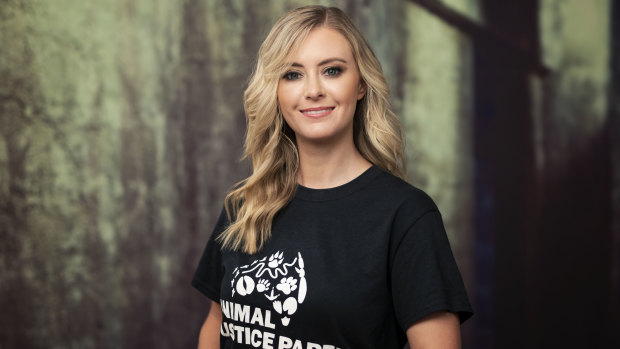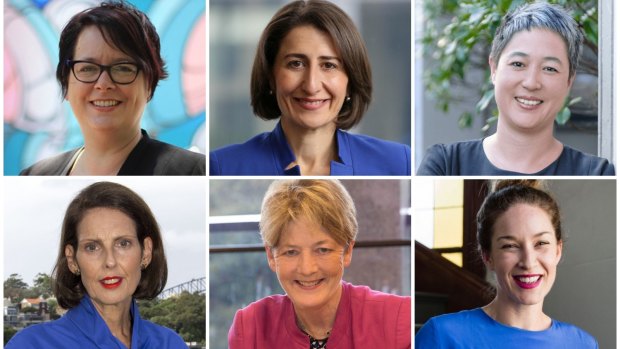By Esther Han
More than one-third of candidates in the NSW election are women, led by the Liberal Party's Gladys Berejiklian who could become the state's first elected female premier.
A Herald analysis of all 935 candidates in Saturday's election shows 34 per cent vying for a seat in the Legislative Assembly and 37 per cent running for a spot in the Legislative Council are women.

Emma Hurst, Animal Justice Party candidate for the Legislative Council. The party has the highest percentage of women.
"We're moving in the right direction but we've got a long way to go," Licia Heath, CEO of Women for Election Australia, said.
"We are starting to see the very early stage of women mobilising, like in the US, in reaction to how frustrated they've been with the political discourse, but we're a long way off parity."
In the lower house, where all 93 seats are up for grabs, Labor and Greens are running twice as many female candidates as the Coalition, with 46 per cent of Labor's candidates and 43 per cent of the Greens' women.
Only 24 per cent of the Coalition's lower house candidates are women. During the pre-selection process, Miranda MP Eleni Petinos and North Shore MP Felicity Wilson faced challenges by men despite Ms Berejiklian saying she wanted all her sitting MPs returned.
While no major party has implemented mandatory gender quotas, often citing the merit principle, Labor lifted its voluntary one from 35 per cent in 1994 to 50 per cent in 2015.
"When we committed to affirmative action in 1994, we had 25 per cent women in our Parliament, so it shows it requires concerted effort and over time that's paid off for the Labor Party and we're proud of that," Labor's deputy leader Penny Sharpe said.
Among parties with candidates in 20 or more lower house seats, the Animal Justice Party has the highest percentage of women, with 63 per cent of 49 candidates female.

Labor's Penny Sharpe, Liberals' Gladys Berejiklian, Greens' Jenny Leong, Independent Carolyn Corrigan, Liberals' Catherine Cusack and Keep Sydney Open's Jess Miller are running for seats in the NSW election.Credit: SMH
The Christian Democratic Party (10 per cent), Shooters, Fishers and Farmers (15 per cent), and Keep Sydney Open (24 per cent) have smaller percentages of women.
"It’s not perfect, but we've tried to open the door and get people who represent different communities - Muslim, Asian, Indigenous, LGBTQI, women, it’s a mixed bag," Keep Sydney Open's Jess Miller said.
On the upper house ballot paper, six of the lead candidates of 19 groups are female, including Animal Justice's Emma Hurst, Coalition's Catherine Cusack and Voluntary Euthanasia Party's Shayne Higson.
"I think we are the only party running more female candidates [overall] because we're about kindness, equality and non-violence," Ms Hurst said. "None of us are running to get attention or to gain power."
An analysis of the 19 groups with a box above the line on the upper house ballot paper shows left-wing parties such as Voluntary Euthanasia (69 per cent) and Greens (62 per cent) have the highest percentages of women.
On the opposite end of the spectrum, right-wing groups such as Liberal Democratic Party (6 per cent) and Pauline Hanson’s One Nation (24 per cent) have the lowest percentages.
About 40 per cent of the Coalition's 15 lower house candidates are women.
"We are working hard to continue improving through initiatives such as the reinvigorated Liberal Women's Forum program that provides support, training and mentoring for female members," a Liberal Party spokesman said.